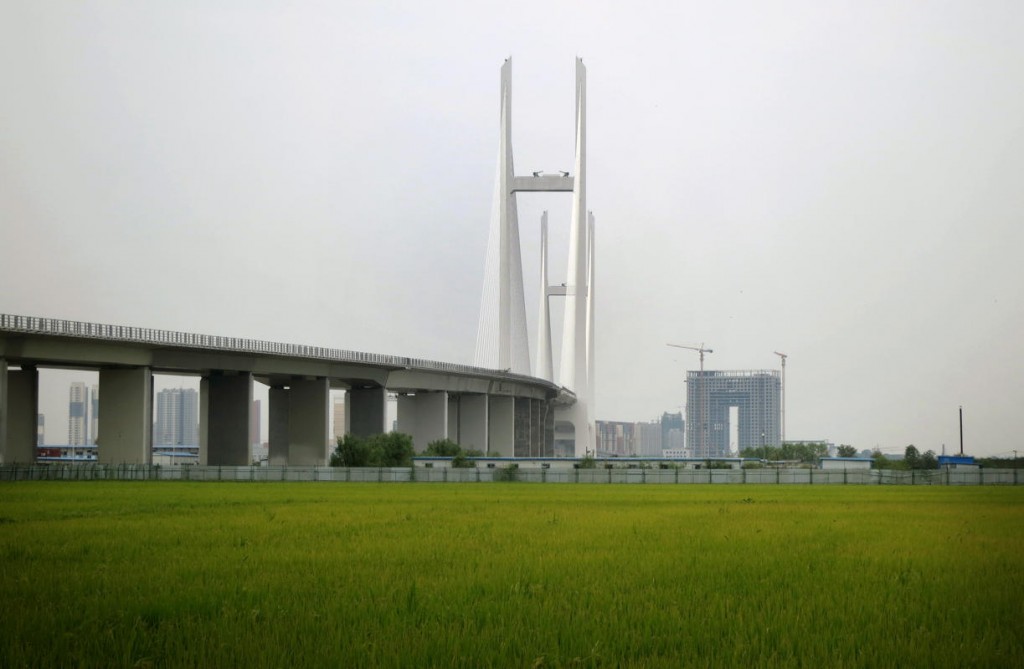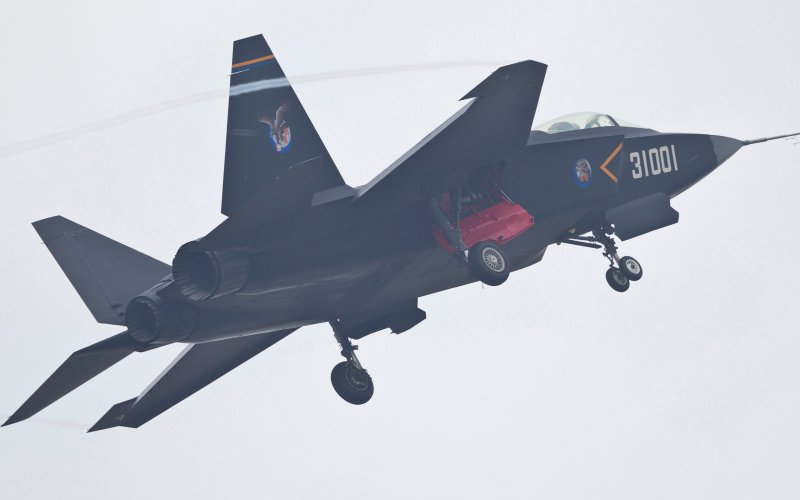A Half-Built Bridge to Nowhere
Very typical of maniacal and ingrate Kim Jong Un led North Korean behavior – enter an agreement saying they’ll meet obligations and then re-neg or in this case abandon outright. How many iterations have transpired over the six-party talks, on and off North-South Korean business activity in the South Korean operated economic zone, and so on. It’s no wonder the international community is fed up with Fatty Kim’s shenanigans.
The AP report below may hold some truth – dismayed with China’s objections over his nuclear intentions and all-round belligerence and China’s close relations with the South (China demurred on Kim’s repeated requests for an official visit; he also summarily executed his uncle who was considered pro-China), Kim’s cozying up to Russia in a bid to balance the relationship. Or maybe the North is just plainly out of hard cash (although barter is always an option). Most of North Korea’s economic aid comes from China which could really stick it to him (pressure on several fronts – trade, aid, energy, investment, diplomacy, etc.) if it wanted to.
But alas, China remains reluctant to exert any substantive pressure due in part to the strong pro-North lobby within the CPC and a deep-seated fear that should economic collapse really occur there, hundreds of thousands, if not millions, of refugees would spill over the border to become an immeasurable burden for the country. Not to mention, under that scenario, South Korean and American troops would be stationed right at the border and the CPC really doesn’t want to deal with that. Thus, despite venting some anger on the Global Times and other official media, China just puts up with Fatty Kim.
The bridge was supposed to be a key link for trade and travel between China’s northeast provinces and a much-touted special economic zone in North Korea — so key that Beijing sank more than $350 million into it. Now, it is beginning to look like Beijing has built a bridge to nowhere.
An Associated Press Television News crew in September saw nothing but a dirt ramp at the North Korean end of the bridge, surrounded by open fields. No immigration or customs buildings could be seen. Roads to the bridge had not been completed.
The much-awaited opening of the new bridge over the Yalu River came and passed on Oct. 30 with no sign the link would be ready for business anytime soon. That prompted an unusually sharp report in the Global Times quoting residents in the Chinese city of Dandong expressing anger over delays in what they had hoped would be an economic boom for their border city.
The report suggested the opening of the mammoth, 3-kilometer bridge has been postponed “indefinitely.” Beijing and Pyongyang have made no official comment.
Foreign analysts have suggested the apparent lack of progress might indicate wariness in Pyongyang over China’s economic influence in the country, which has been growing substantially in recent years as Pyongyang has become more isolated from other potential partners over its nuclear program, human rights record and other political issues.
Since its founding, North Korea has been exceedingly cautious of becoming too dependent on either of its superpower neighbors, China and Russia, preferring to play each off the other. That pattern seems to be repeating itself now.
The official media, while saying little about business with China, have lately been playing up the importance of improving trade and political ties with Moscow. On Monday, leader Kim Jong Un sent a powerful party cadre as his special envoy to Russia to discuss how to bolster such ties.
Better ties with Moscow could further dilute Beijing’s leverage over the North, the limits of which became apparent when the North went ahead with its first nuclear test in 2006. Beijing has repeatedly urged North Korea to abandon nuclear weapons, to no avail.
The bridge — which, from the start, appears to have been of more interest to China than to North Korea — is intended to provide a new connection between Dandong and the special economic development zone in North Korea’s Sinuiju. More broadly, China wants to develop inroads with North Korea that will allow its landlocked northeastern provinces access to North Korean ports so its goods can be exported or shipped down the Chinese coastline more cheaply. Hopes of attracting foreign investment to the 40-square-kilometer (15-square-mile) area of Sinuiju, much of which is still farmland, have yet to materialize.
Hajime Izumi, a North Korea specialist at Japan’s Shizuoka University, said the bridge delays come as Beijing and Pyongyang are rethinking their relationship, shifting from the past focus on alliance and mutual friendship to a more pragmatic one based instead on mutual interest. He added that North Korea may also simply be waiting for the Chinese to chip in more money.
– AP
China Daily Wrong to Laud Growing Chinese Arms Sales Abroad
Have no idea which dope of an editor at China Daily allowed this report to be published!
It’s one thing that Chinese gun makers such as Norinco are doing well on the international market but is it good for China’s image to report on its inroads in the Third World where all sorts of problems abound with such enthusiasm?
China critics and Sinophobes around the world will be reveling in the fact that China’s biggest English language daily features such articles on its own volition. There should be a profound rethink viz. editorial policy on such topics at the paper.
The article can be seen at: http://www.chinadaily.com.cn/cndy/2014-11/17/content_18924414.htm or
Much Ado About China’s J-31 Gyrfalcon Stealth Fighter
China’s second stealth fighter the J-31 “Gyrfalcon” (or “Falcon Hawk”, “Falcon Eagle”) became the star attraction at the 10th Zhuhai Airshow China fair that just closed over the weekend. Leading up to the show, particularly the US media and officialdom had poo-pooed its debut, attacking it as an unworthy knock-off of the US F-35 Joint Strike Fighter, the core technologies and design of which were stolen from a subcontractor of Lockheed Martin through cyber attacks.
Interestingly, however, a National Post commentary by an otherwise China critic was somewhat conciliatory, quoting an expert friend of his as saying stealing aircraft and rocket designs is an ‘old business’ “that when done right can work wonders for the country playing catch-up. Look at the US ballistic missile and space programs, which got a 10 to 15 year leap from the V2 rockets and the German scientists who came with it.”
He also notes there is a consensus among Western leaders that, in contrast to their Russian counterparts who had in the day borrowed passenger airliner designs from the West, Chinese engineers are more likely to be able to replicate (and even surpass) Western levels of quality and sophistication. Moreover, the Chinese can pour in a lot of financial resources and manpower to make sure it is done right. (The success of China’s high speed rail locomotives and vast rail network is a case in point.)
Regardless of whether acquired through cyber espionage or indigenously developed or a combination of both, the Chinese have successfully designed and built a 5th stealth fighter that will be formidable for foreign air forces and navies to contend with. Sun Cong, chief designer of the J-31, told the Xinhua News Agency he anticipates the fighter will eventually be paired with the bigger and more technologically mature J-20 that debuted a year earlier and become China’s next generation carrier-borne jet, along the lines of the US’s F-35C.
Its demonstration flight at the air show also indicates it is intended for export. The Zhuhai show drew about 700 companies from all over the world eager to show off their stuff and make deals. Aerial expert John Stillion said to Inquisitr News, “the more ambitious the display, probably the closer it is being ready for prime time. If they fly it, that’s a big deal. One of the ways countries try to increase demand for their combat aircraft is displaying them, doing cool stuff at air shows; it’s an opportunity to show off.”
Huanqiu.com, a major news portal in China, quoted sources from J-31 manufacturer Aviation Industry Corp of China (AVIC) that some “traditional buyers” of Chinese aircraft had expressed “great interest” in the fighter. Foreign analysts speculate Pakistan will be first in line followed by Bangladesh and Myanmar. After that, potentially Iran and various Gulf, African, South American, and even Southeast Asian states could be waiting. It is very doubtful if any will be offered to North Korea or Vietnam even if they have the hard cash because of Korean peninsula nuclear and South China Sea territorial dispute concerns.
The New York Times figures the J-31 will go for between US$75 to $100 million a piece, vastly cheaper than the J-35 Lightning II whose going price has sky-rocketed to a whopping $200 million (and more for the Japanese market) and even the presumably more reasonably priced Russian Sukhoi T-50. Chinese military analysts on a recent CCTV 4 Focus Today programme concurred it would be substantially lower than the $100 million mark, making it affordable for many developing countries.
Although the Western media assumes the basic design to be stolen, they nonetheless nitpick and conjecture about the J-31’s design and performance faults. One big issue is the continued use of Russian-made engines which, in the case of a J-31 prototype, is the Klimov RD-93. But, China has already developed an indigenous design similar to the Russian and improving it with greater thrust for fitting on future J-31s. With greater capabilities and confidence, military analysts suggest Chinese makers may be able to power the J-31 with domestic engines faster than for the J-20 and in greater quantities.
A IHS Jane’s Defence Weekly correspondent writing on CNN, observing the J-31’s flight routine, said the plane “bleeds” too much energy leading to altitude loss when entering turns, deemed a aerodynamic design drawback. Moreover, the J-31 flew “clean” meaning that it was not armed. On real missions loaded with weapons, the plane would be heavier and therefore could perform even worse. Chinese jet fighter aficionados and netizens further point out the J-31’s exhaust appeared darker, suggesting perhaps the engine wasn’t burning fuel efficiently.
But, questioned about possible design flaws of the J-31, Vladimir Barkovsky, a prominent designer with Russian Aircraft Corporation MiG, stated in spite of some imperfections, the J-31 “looks like a good machine”. And although it incorporated certain features already in use on 5th generation US fighter designs, the J-31 “is not a copy but a well done indigenous design.”
Interviewed by US Naval Institute News (USNI News), a senior US naval officer predicted China will eventually perfect the J-20 and J-31 – it is just a matter of time. “They are going to get there one day, make no mistake. It won’t be tomorrow or the next day but the fact this place (Zhuhai) is debuting now should tell you something about China’s commitment”, he said.





